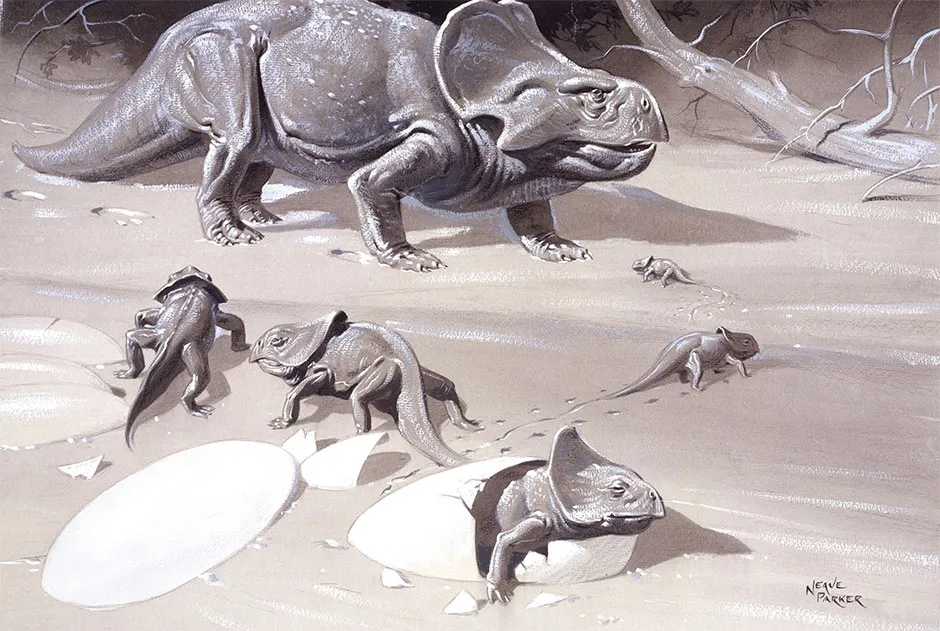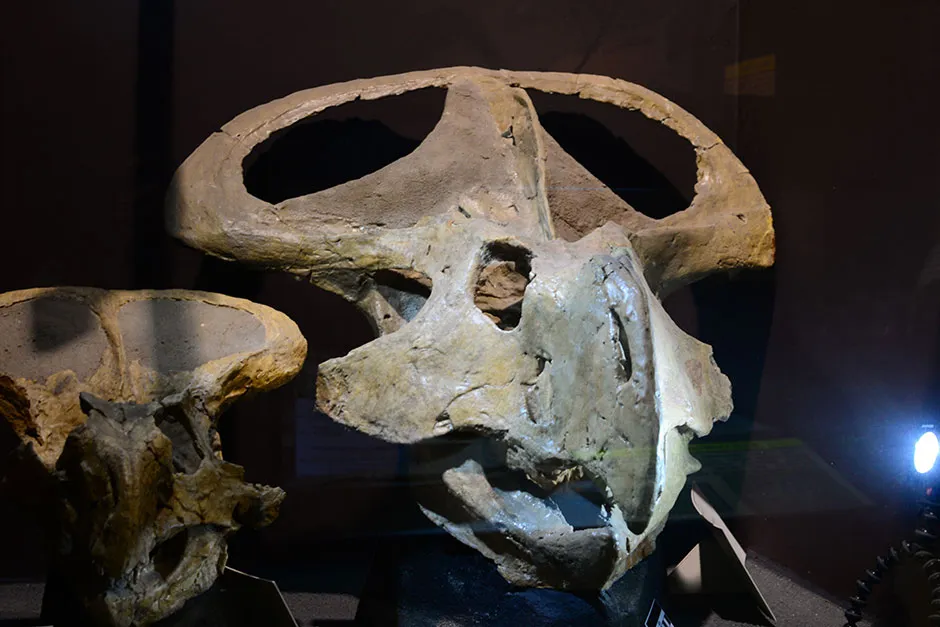A small sheep-sized dinosaur that lived more than 70 million years ago evolved to have a “huge” neck frill as a result of sexual selection, according to scientists.
The Protoceratops, a 1.8m-long plant-eating dinosaur that roamed what is now Mongolia’s Gobi Desert, had elaborate bony frills that extended over the neck.
It is thought that the frills may have served to protect the vulnerable neck from predators and helped regulate body temperature, but experts now believe it may have had another function: attracting mates.
Sexual selection is the idea that certain traits in animals are favoured by members of the opposite sex, so in time, these characteristics become more dominant in the creatures.For example, the elaborate feathered display of peacocks are thought to be a result of sexual selection.

“In many fossil animals we have unusual structures and traits which aren’t really seen in living animals today," said Dr Andrew Knapp, a postdoctoral researcher at the Natural History Museum.“Protoceratops didn’t have any horns but they still had a huge frill.
“Several theories have previously been suggested for the emergence of these neck frills. Some have suggested that they were used for protection, others that they played a role in cooling the large herbivores down, or that they allowed individuals to recognise different members of their own species.”
Read more about dinosaurs:
- Baby tyrannosaurs were the largest-ever hatchlings
- Ireland’s first-ever dinosaurs discovered
- Madagascan fossil 'turns bird evolutionary anatomy on its head'
Dr Knapp and his team analysed 3D scans of 30 complete skulls of Protoceratops, which belong to a group of beaked, herbivorous dinosaurs known as ceratopsian.These skulls ranged in size from “tiny day-old hatchlings to fully grown adults”.
The researchers found that the Protoceratops skulls showed a distinct pattern of growth, suggesting the neck frills were a sexually selected feature, much like the antlers of a deer.
Any feature that grows much more quickly than the rest of the body, such as a deer's antlers, is very likely to be the result of sexual selection. By comparing the skulls ofProtoceratops of different ages, the researchers found that this was true of their neck frills.

Whilst sexual selection appears to be in action in the Protoceratops fossils, the experts said there is no obvious evidence of sexual dimorphism – where the two sexes of the same species exhibit different characteristics beyond the differences in their sexual organs – although this characteristic may have been present in the creatures.
“There almost certainly were differences between males and females but quite often differences are in body size, so males will be bigger than females or vice versa," said Dr Knapp.
“It could also have been through something else like colouration [that showed sexual dimorphism], which doesn’t preserve in fossils.”
Reader Q&A: What did dinosaurs evolve from?
Asked by: Adam King, Huddersfield
Dinosaurs are a type of reptile, and they evolved from another group of reptiles called ‘dinosauromorphs’ around 250 million years ago. The dinosauromorphs were small and humble animals, and they didn’t look anything like T. rex or Brontosaurus.
Instead, they were the size of house cats, walked on all fours, and had long, skinny limbs like a greyhound. The dinosauromorphs weren’t at the top of the food chain, but their speed and agility ensured their success.
Read more: